A Comparative Study of a Hybrid Experimental–Statistical Energy Analysis Model with Advanced Transfer Path Analysis for Analyzing Interior Noise of a Tiltrotor Aircraft
Abstract
:1. Introduction
2. Theory
2.1. Advanced Transfer Path Analysis Method (ATPA)
2.2. Statistical Energy Analysis (SEA)
3. Methodology
3.1. ATPA
3.1.1. Area of Study
3.1.2. Relevant Structural Linking Points
3.1.3. List of Subsystems and Targets
- Interior panels: The list of panel subsystems is composed of different elements inside the study area, that is, the pressurized cabin of the aircraft. On one side, individual elements such as windows or doors are considered as single subsystems. On the other side, larger areas such as the floor or the ceiling are divided into smaller areas, each one of them being a subsystem, represented with an accelerometer at a certain location within the area, in the normal direction to the panel.
- Structural subsystems: The definition of the structural points is based on the study of relevant structural points. From the structural connections, the essential ones are the wing–fuselage connection points, and they are instrumented with a triaxial accelerometer, explained in Section 3.2.2.
- Target 1: The pilot seat, at ear height.
- Target 2: A passenger seat, at ear height.
3.1.4. ATPA Test Description
- Subsystems: One accelerometer per subsystem is required.
- Targets: One microphone per target is required.
- Static test:
- 2.
- Dynamic test:
3.2. SEA Model
3.2.1. Mesh Elements and Subsystem Definition
3.2.2. Boundary Conditions
- The frequency response functions (FRFs) at the linking points. These data are provided during experimental measurements by impacting with an instrumented hammer the linking points between the wings and fuselage.is the accelerance FRFs, is the acceleration, and is the impact force.
- The data on accelerations in operating conditions are measured at the same structural points as during the operational conditions.
3.2.3. Mechanical Properties
3.2.4. Extended Solution
4. Results and Discussions
4.1. Operational Force
4.2. Results of ATPA
4.3. Results of SEA vs. ATPA
4.4. Extended Solution
4.5. Effect of Acoustic Damping on the Interior Noise
5. Conclusions
Author Contributions
Funding
Institutional Review Board Statement
Informed Consent Statement
Data Availability Statement
Acknowledgments
Conflicts of Interest
Nomenclature
| Angular frequency | |
| Global transfer matrix | |
| , | Signals at nodes i and j |
| Direct transfer matrix | |
| Direct transfer function from subsystem to target | |
| Pressure at the target point T | |
| Direct field’s pressure at target point T | |
| Noise contribution of subsystem at the target point T | |
| Acceleration in subsystem | |
| Synthesized acceleration in panel | |
| Synthesized pressure at target due to structural excitation of the panel i | |
| Input power of the subsystem i, in SEA analysis | |
| Dissipated power within the subsystem i | |
| Internal damping loss factor of the subsystem i | |
| Transfer of power between subsystems i and j | |
| , | Total energy of subsystems i and j |
| , | The modal density of subsystem and |
| Accelerance frequency response function (FRF) | |
| Acceleration | |
| Impact force |
References
- Ma, J.; Lu, Y.; Xu, X.; Yue, H. Research on near field aeroacoustics suppression of tilt-rotor aircraft based on rotor phase control. Appl. Acoust. 2022, 186, 108451. [Google Scholar] [CrossRef]
- Ma, J.; Lu, Y.; Qin, Y.; Xu, X. Tilt-rotor aircraft fuselage wall aeroacoustics radiation suppression using Higher harmonic control. Appl. Acoust. 2022, 188, 108548. [Google Scholar] [CrossRef]
- Wang, Z.; Huang, J.; Yi, M.; Lu, S. A Dynamic RCS and Noise Prediction and Reduction Method of Coaxial Tilt-Rotor Aircraft Based on Phase Modulation. Sensors 2022, 22, 9711. [Google Scholar] [CrossRef] [PubMed]
- Wang, F.; Lu, Y.; Lee, H.P.; Yue, H. A novel periodic mono-material strut with geometrical discontinuity for helicopter cabin noise reduction. Aerosp. Sci. Technol. 2020, 105, 105985. [Google Scholar] [CrossRef]
- Rostami, M.; Bardin, J.; Neufeld, D.; Chung, J. EVTOL Tilt-Wing Aircraft Design under Uncertainty Using a Multidisciplinary Possibilistic Approach. Aerospace 2023, 10, 718. [Google Scholar] [CrossRef]
- Misol, M. Full-scale experiments on the reduction of propeller-induced aircraft interior noise with active trim panels. Appl. Acoust. 2020, 159, 107086. [Google Scholar] [CrossRef]
- Aragonès, À.; Poblet-Puig, J.; Arcas, K.; Rodríguez, P.V.; Magrans, F.X.; Rodríguez-Ferran, A. Experimental and numerical study of Advanced Transfer Path Analysis applied to a box prototype. Mech. Syst. Signal Process. 2019, 114, 448–466. [Google Scholar] [CrossRef]
- Ramos, A.C.R.; Melo, C.A.P.; Álvarez-Briceño, R.; De Oliveira, L.P.R. Applications of Strain Measurements to Improve Results on Transfer Path Analysis; SAE Technical Papers; SAE International: Warrendale, PA, USA, 2020. [Google Scholar] [CrossRef]
- Magrans, F.X.; Poblet-Puig, J.; Rodríguez-Ferran, A. The solution of linear mechanical systems in terms of path superposition. Mech. Syst. Signal Process. 2017, 85, 111–125. [Google Scholar] [CrossRef]
- Bouhaj, M.; von Estorff, O.; Peiffer, A. An approach for the assessment of the statistical aspects of the SEA coupling loss factors and the vibrational energy transmission in complex aircraft structures: Experimental investigation and methods benchmark. J. Sound Vib. 2017, 403, 152–172. [Google Scholar] [CrossRef]
- Guasch, O. A direct transmissibility formulation for experimental statistical energy analysis with no input power measurements. J. Sound Vib. 2011, 330, 6223–6236. [Google Scholar] [CrossRef]
- Magrans, F.X. Method of measuring transmission paths. J. Sound Vib. 1981, 74, 321–330. [Google Scholar] [CrossRef]
- Petrone, G.; Melillo, G.; Laudiero, A.; De Rosa, S. A Statistical Energy Analysis (SEA) model of a fuselage section for the prediction of the internal Sound Pressure Level (SPL) at cruise flight conditions. Aerosp. Sci. Technol. 2019, 88, 340–349. [Google Scholar] [CrossRef]
- Mace, B. Statistical energy analysis, energy distribution models and system modes. J. Sound Vib. 2003, 264, 391–409. [Google Scholar] [CrossRef]
- Burroughs, C.B.; Fischer, R.W.; Kern, F.R. An introduction to statistical energy analysis. J. Acoust. Soc. Am. 1997, 101, 1779–1789. [Google Scholar] [CrossRef]
- Binet, D.; Van Herpe, F. Numerical Predictions of the Vibro-Acoustic Transmission through the Side Window Subjected to Aerodynamics Loads. In Flinovia—Flow Induced Noise and Vibration Issues and Aspects-III; Springer: Berlin/Heidelberg, Germany, 2021; pp. 297–309. [Google Scholar]
- Brandstetter, M.; Dutrion, C.; Antoniadis, P.D.; Mordillat, P.; Van Den Nieuwenhof, B. SEA Modelling and Transfer Path Analysis of an Extensive RENAULT B segment SUV Finite Element Model. In Proceedings of the Aachen Acoustics Colloquium, Pullman Aachen Quellenhof, Germany, 26–28 November 2018. [Google Scholar]
- Wernsen, M.W.F.; van der Seijs, M.V.; de Klerk, D. An indicator sensor criterion for in-situ characterisation of source vibrations. Sensors and Instrumentation. In Volume 5: Proceedings of the 35th IMAC, A Conference and Exposition on Structural Dynamics 2017; Springer: Berlin/Heidelberg, Germany, 2017; pp. 55–69. [Google Scholar]
- Petřík, J.; Fiedler, R.; Lepšík, P. Loss factor estimation of the plywood materials. Vibroeng. Procedia 2016, 7, 42–47. [Google Scholar]
- Refahati, N.; Jearsiripongkul, T.; Thongchom, C.; Saffari, P.R.; Saffari, P.R.; Keawsawasvong, S. Sound transmission loss of double-walled sandwich cross-ply layered magneto-electro-elastic plates under thermal environment. Sci. Rep. 2022, 12, 16621. [Google Scholar] [CrossRef] [PubMed]
- Destefanis, S.; Bellini, M.; De Walque, C.; Baudson, R.; Brandstetter, M. Virtual SEA Vibro-Acoustic Response Prediction of the IXV Space Hardware Exposed to Acoustic Diffuse Random Field; Free Field Technologies, MSC Software: Mont-Saint-Guibert, Belgium, 2019. [Google Scholar]
- Sipos, D.; Brandstetter, M.; Guellec, A.; Jacqmot, J.; Feszty, D. Extended Solution of a Trimmed Vehicle Finite Element Model in the Mid-Frequency Range. In Proceedings of the 11th International Styrian Noise, Vibration & Harshness Congress: The European Automotive Noise Conference, Graz, Austria, 17–19 June 2020. [Google Scholar] [CrossRef]

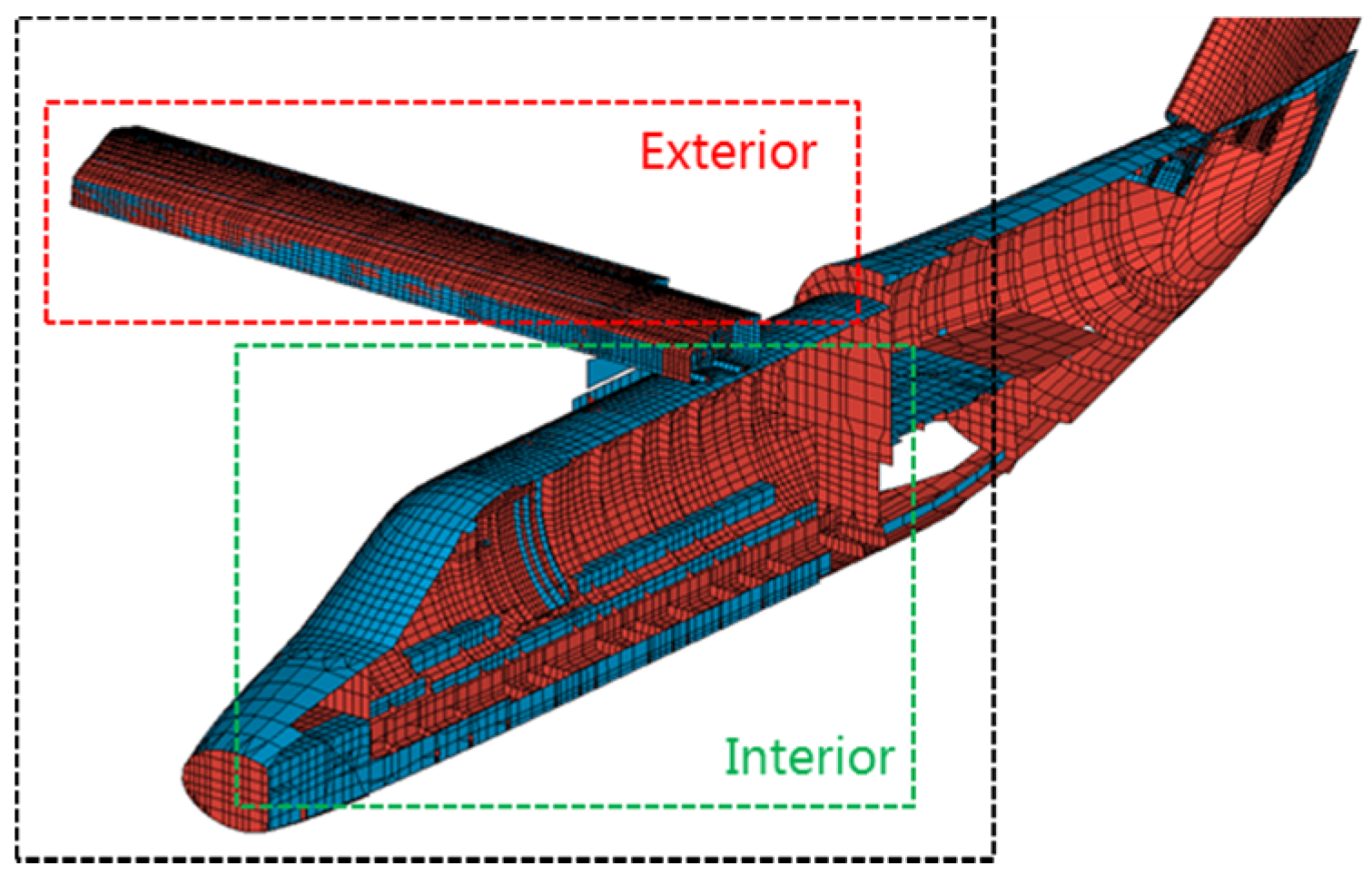


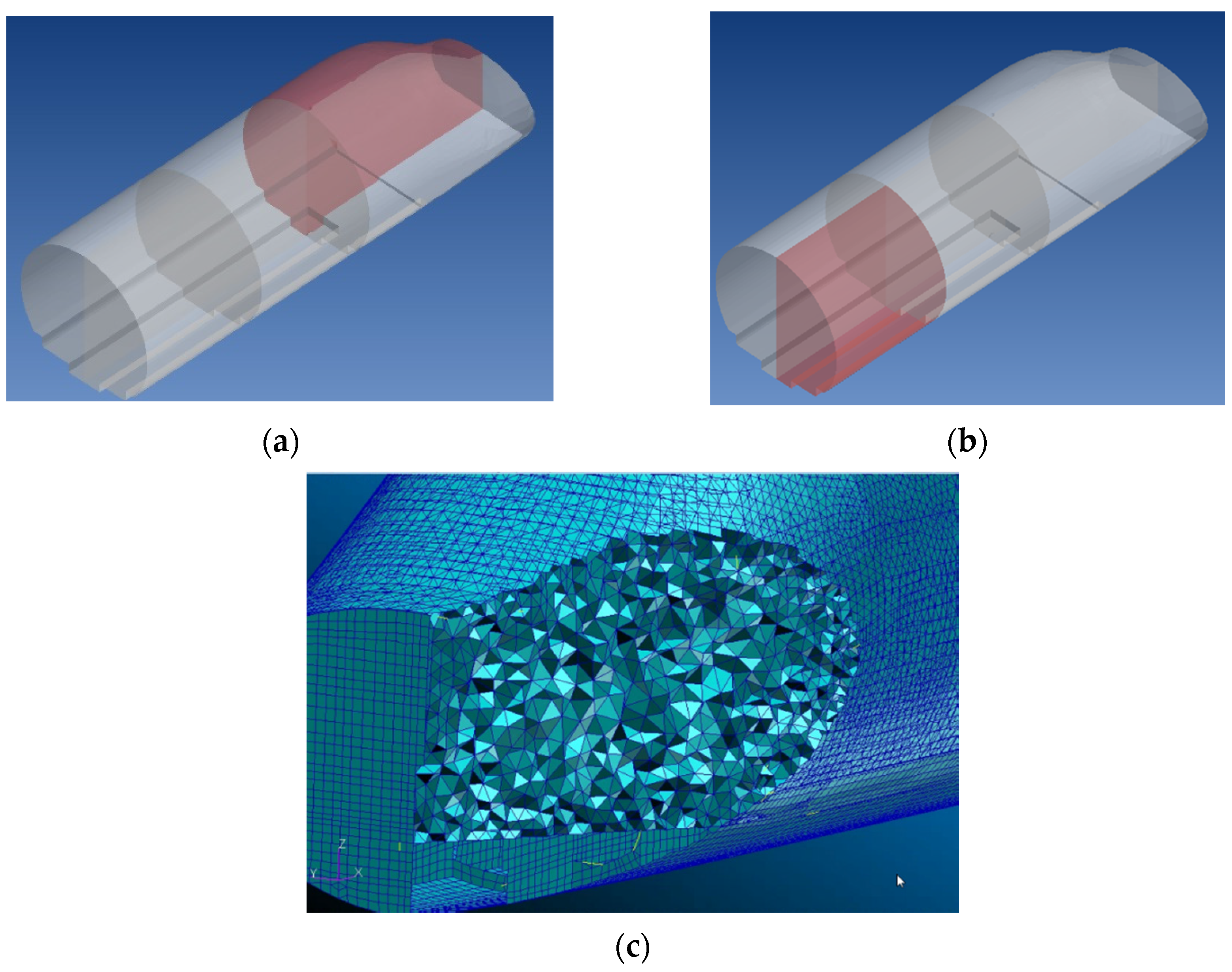
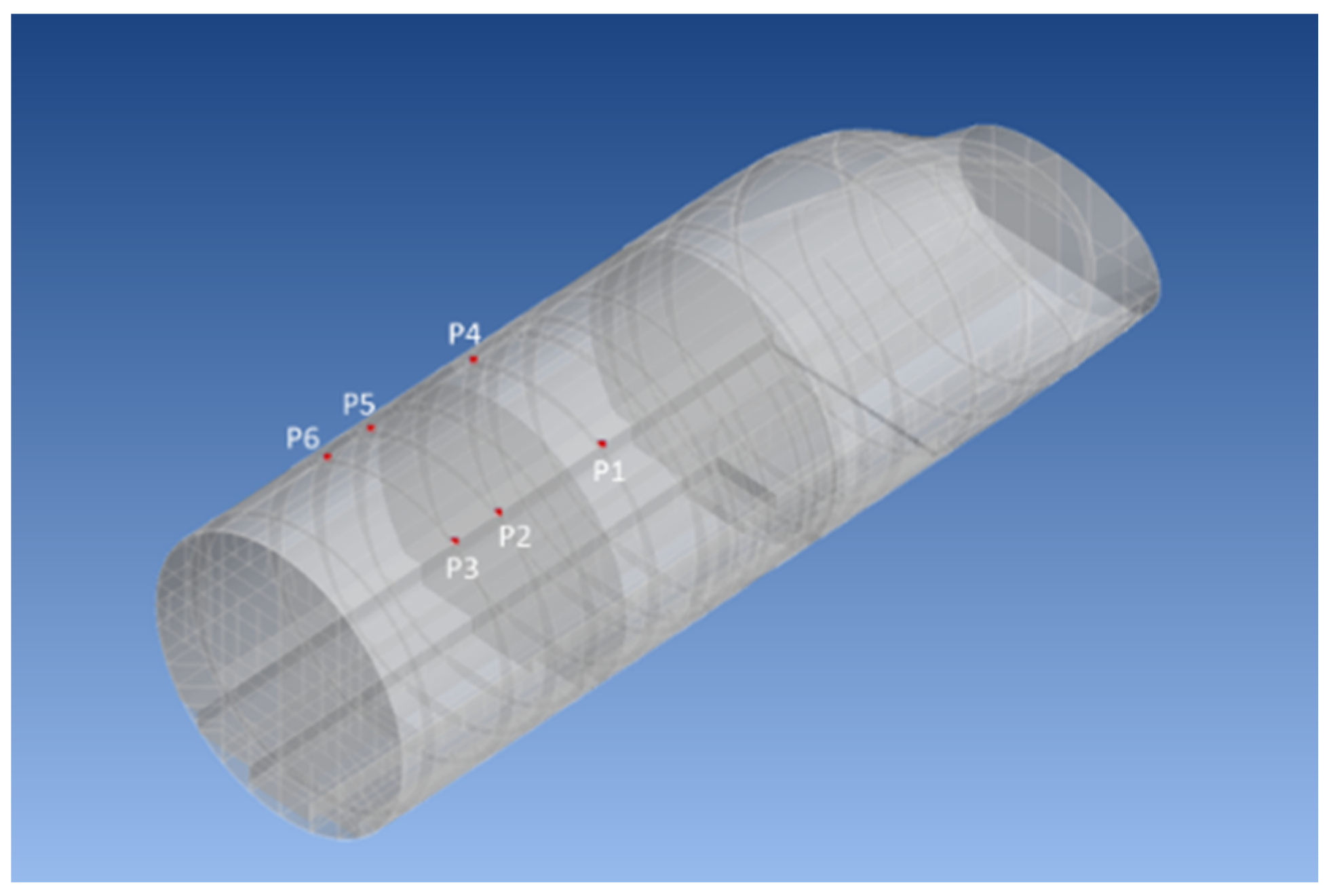
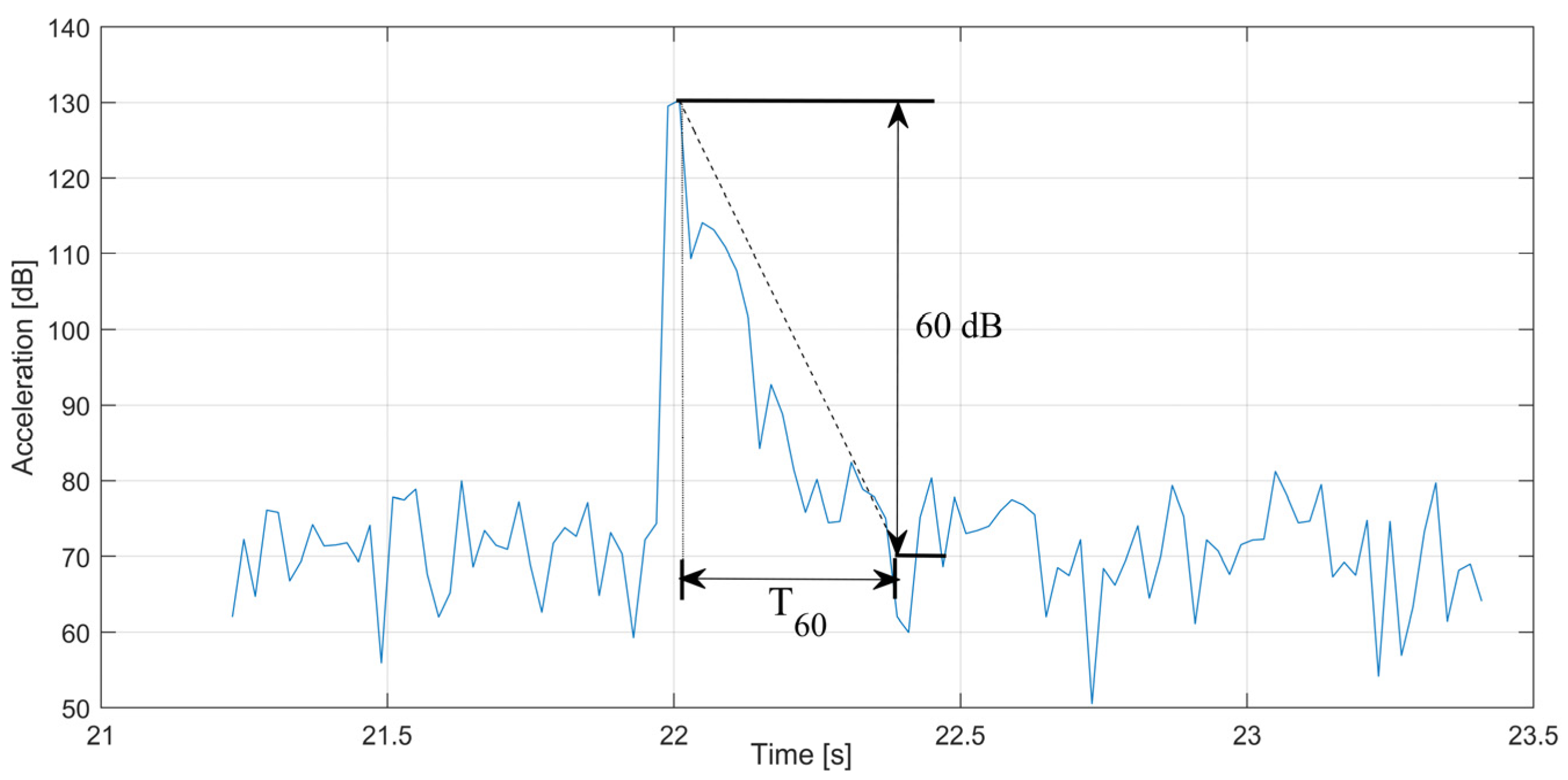

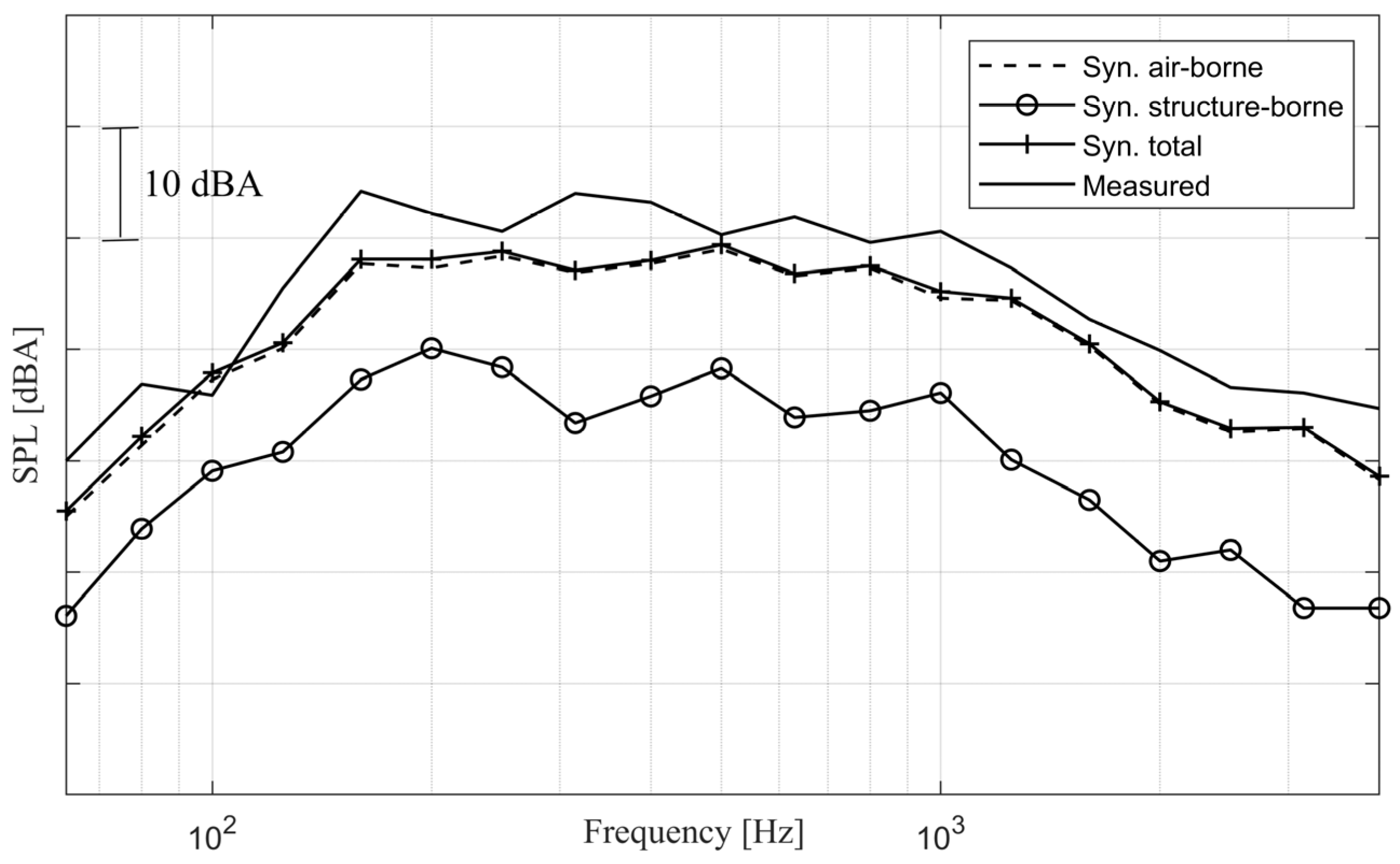
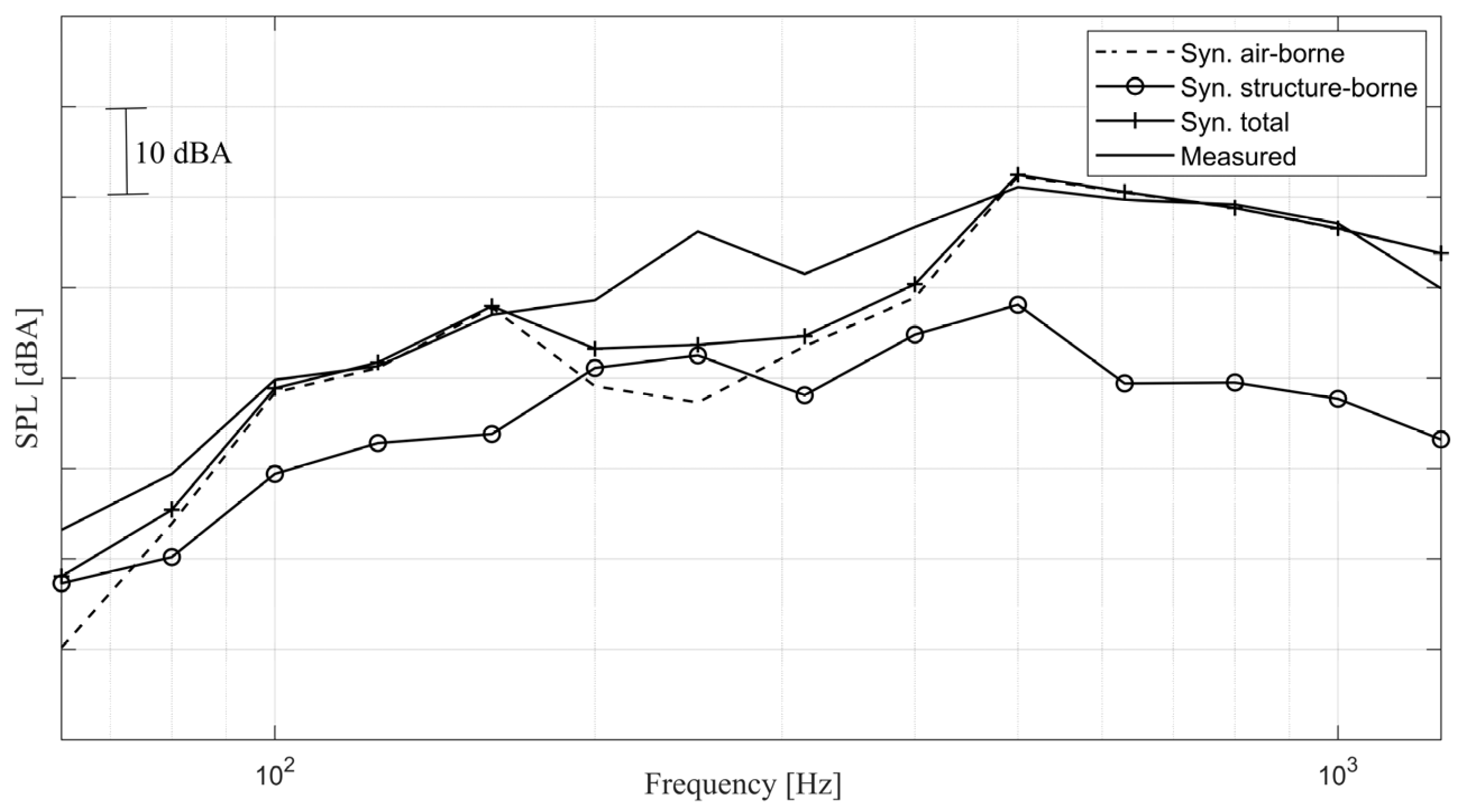

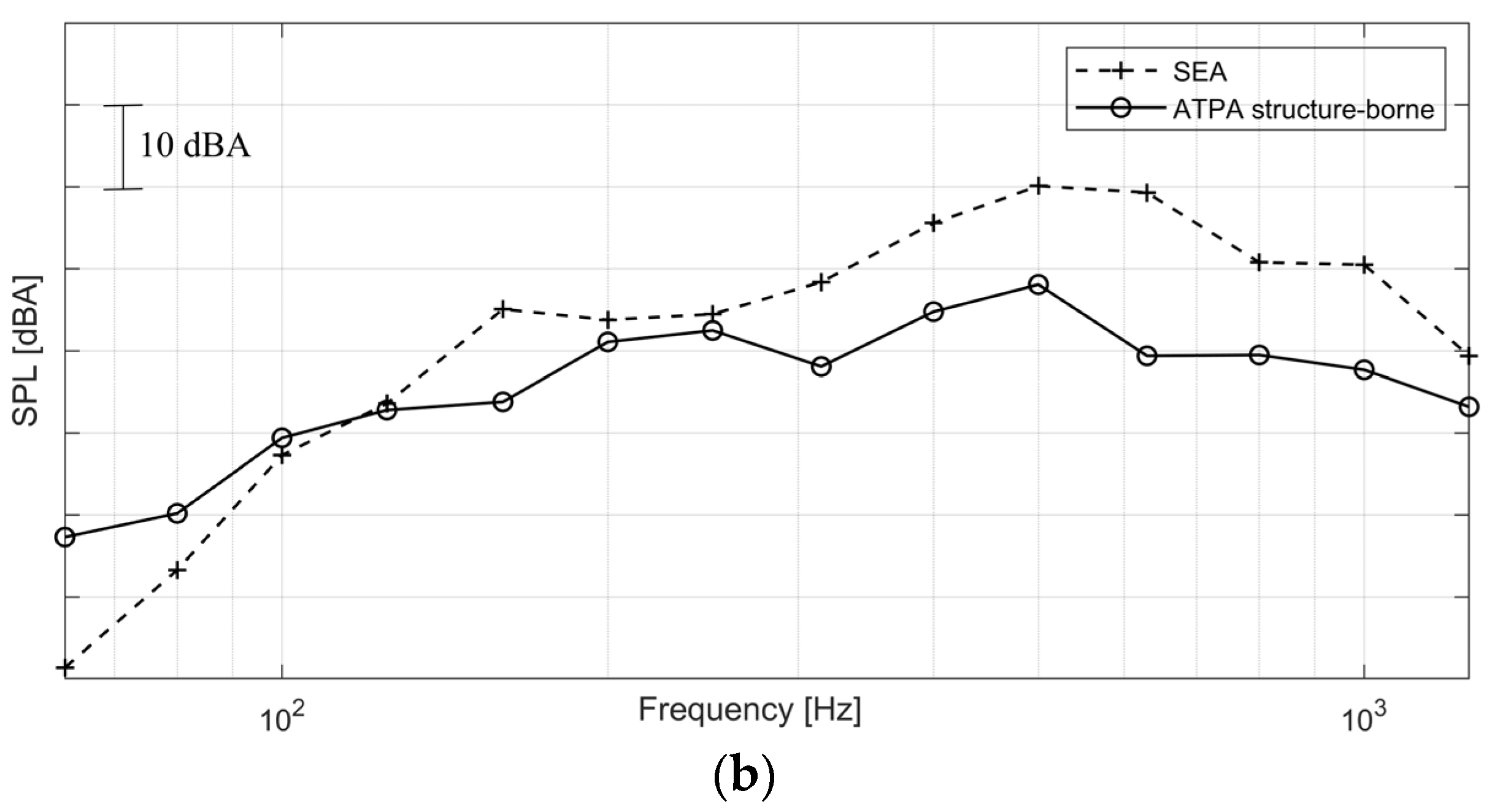

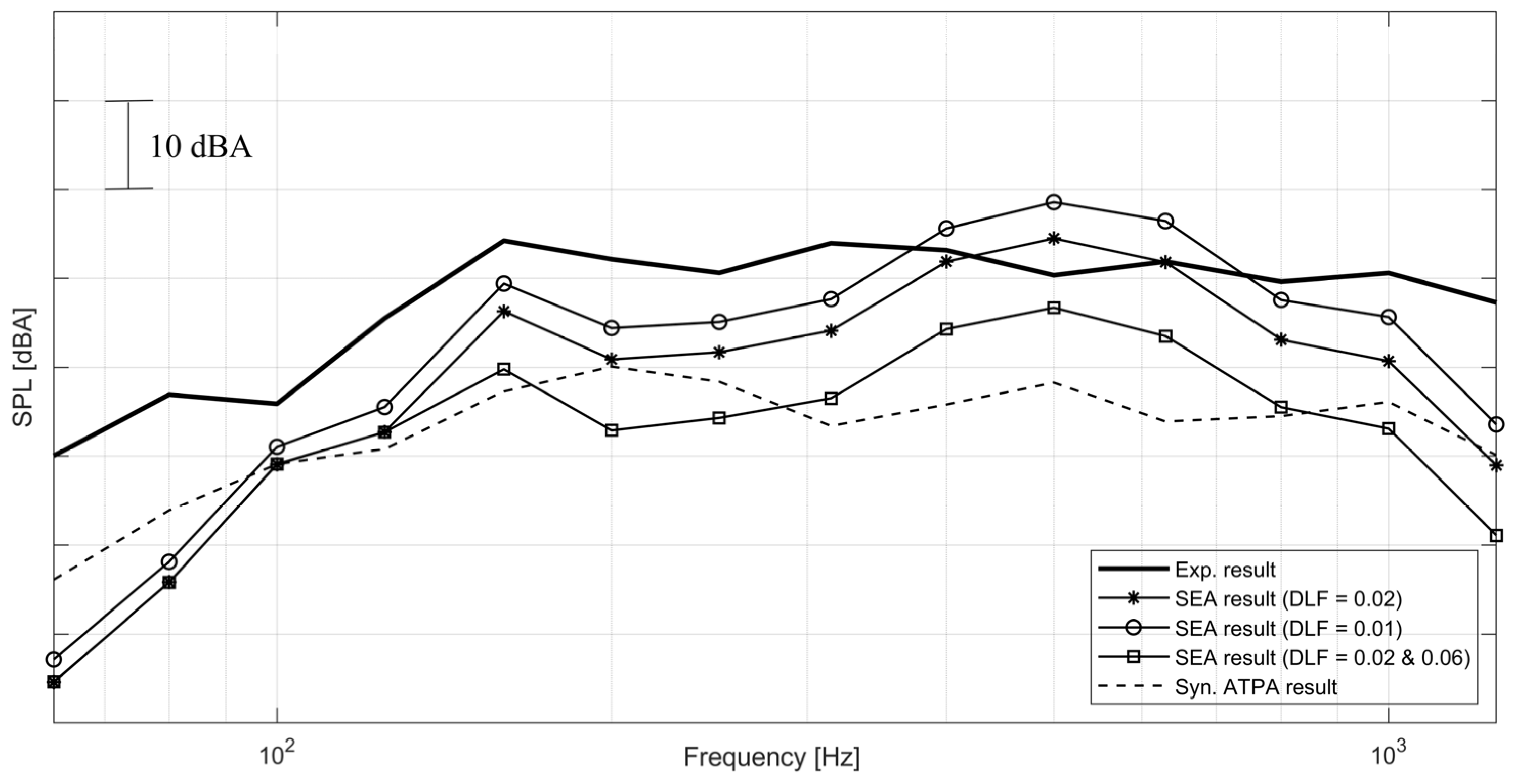
Disclaimer/Publisher’s Note: The statements, opinions and data contained in all publications are solely those of the individual author(s) and contributor(s) and not of MDPI and/or the editor(s). MDPI and/or the editor(s) disclaim responsibility for any injury to people or property resulting from any ideas, methods, instructions or products referred to in the content. |
© 2023 by the authors. Licensee MDPI, Basel, Switzerland. This article is an open access article distributed under the terms and conditions of the Creative Commons Attribution (CC BY) license (https://creativecommons.org/licenses/by/4.0/).
Share and Cite
Sohrabi, S.; Segura Torres, A.; Cierco Molins, E.; Perazzolo, A.; Bizzarro, G.; Rodríguez Sorribes, P.V. A Comparative Study of a Hybrid Experimental–Statistical Energy Analysis Model with Advanced Transfer Path Analysis for Analyzing Interior Noise of a Tiltrotor Aircraft. Appl. Sci. 2023, 13, 12128. https://doi.org/10.3390/app132212128
Sohrabi S, Segura Torres A, Cierco Molins E, Perazzolo A, Bizzarro G, Rodríguez Sorribes PV. A Comparative Study of a Hybrid Experimental–Statistical Energy Analysis Model with Advanced Transfer Path Analysis for Analyzing Interior Noise of a Tiltrotor Aircraft. Applied Sciences. 2023; 13(22):12128. https://doi.org/10.3390/app132212128
Chicago/Turabian StyleSohrabi, Shahin, Amadeu Segura Torres, Ester Cierco Molins, Alessandro Perazzolo, Giuseppe Bizzarro, and Pere Vicenç Rodríguez Sorribes. 2023. "A Comparative Study of a Hybrid Experimental–Statistical Energy Analysis Model with Advanced Transfer Path Analysis for Analyzing Interior Noise of a Tiltrotor Aircraft" Applied Sciences 13, no. 22: 12128. https://doi.org/10.3390/app132212128




